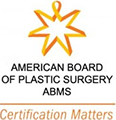Recovering From Breast Reconstruction
June 11, 2014
Atlanta plastic surgery, breast surgery, Cumming plastic surgeon, post-surgical exercise, Rapid City breast reconstruction, recovery from breast surgery
After a lumpectomy or mastectomy to remove breast cancer, many patients choose to undergo breast reconstruction, an elective surgery for women who desire to rebuild their breasts after breast cancer treatment. Since each breast cancer patient’s journey is different, there are several reconstructive techniques to address the amount of remaining tissue, the severity of the cancer, and the patient’s body structure. However, regardless of the particular form of reconstruction, all patients want to back to normal, healthy activities as soon as they possibly can.
Board certified plastic surgeon Dr. Hunter Moyer performs a wide range of breast reconstruction techniques, taking into account each patient’s unique breast cancer journey and works to develop the most ideal recovery plan. Each patient’s road to recovery is different. The most important aspect of follow-up consultations is the ability to monitor the healing process and advise when an appropriate time is to re-introduce regular physical routines.
A TRAM flap procedure uses a part of the lower abdominal muscle, its blood vessels, and some abdominal fat to rebuild the breast, therefore recovery should be gradual. Patients can generally start walking the next day, with expected tenderness and soreness at the surgical site. Calf and deep breathing exercises for the first two to three days can assist in preventing blood clots. Three to four days after surgery patients can begin arm rehabilitation exercises to reduce swelling and, once the drains are removed, can start stretching the chest and shoulders as well. Regular walks during recovery have been shown to be beneficial, but patients should avoid all abdominal exercises until at least six weeks after surgery and then only with your surgeon’s approval. Start slowly and gently while continuing your stretching exercises and walking or other low-intensity aerobic exercise.
The latissimus dorsi flap technique uses an oval section of muscle, skin, and fat from below the shoulder and behind the armpit to rebuild the breast. Because this type of reconstruction affects the shoulder muscle, you should wait to start any gentle shoulder stretching until about two weeks after surgery, and for about three months after surgery to do any resistance/strength exercises. If you have any shortness of breath, pain, or tightness in your chest, stop exercising immediately. Directly working with your surgeon to develop a plan of movements that are right for you is beneficial in minimizing adverse effects to newly constructed breasts.
DIEP flap breast reconstruction utilizes fat, skin, and blood vessels, but no muscle from the wall of the lower belly to rebuild the breast. Because no muscle is used, most women may recover more quickly than a TRAM flap patient. After DIEP flap surgery, recovery is similarly experienced as with TRAM flap surgery, although strength training can probably be resumed earlier, with approval.
There are a number of factors to be considered when planning the road to recovery for breast reconstruction patients. Thoroughly discussing your progress and future steps is vital to ensuring the safest recovery possible. If you are interested in discussing breast reconstruction options or your plan to recovery, please contact us today. Be sure to follow Dr. Moyer on Facebook, Twitter, and Google+ for the latest plastic surgery news.









